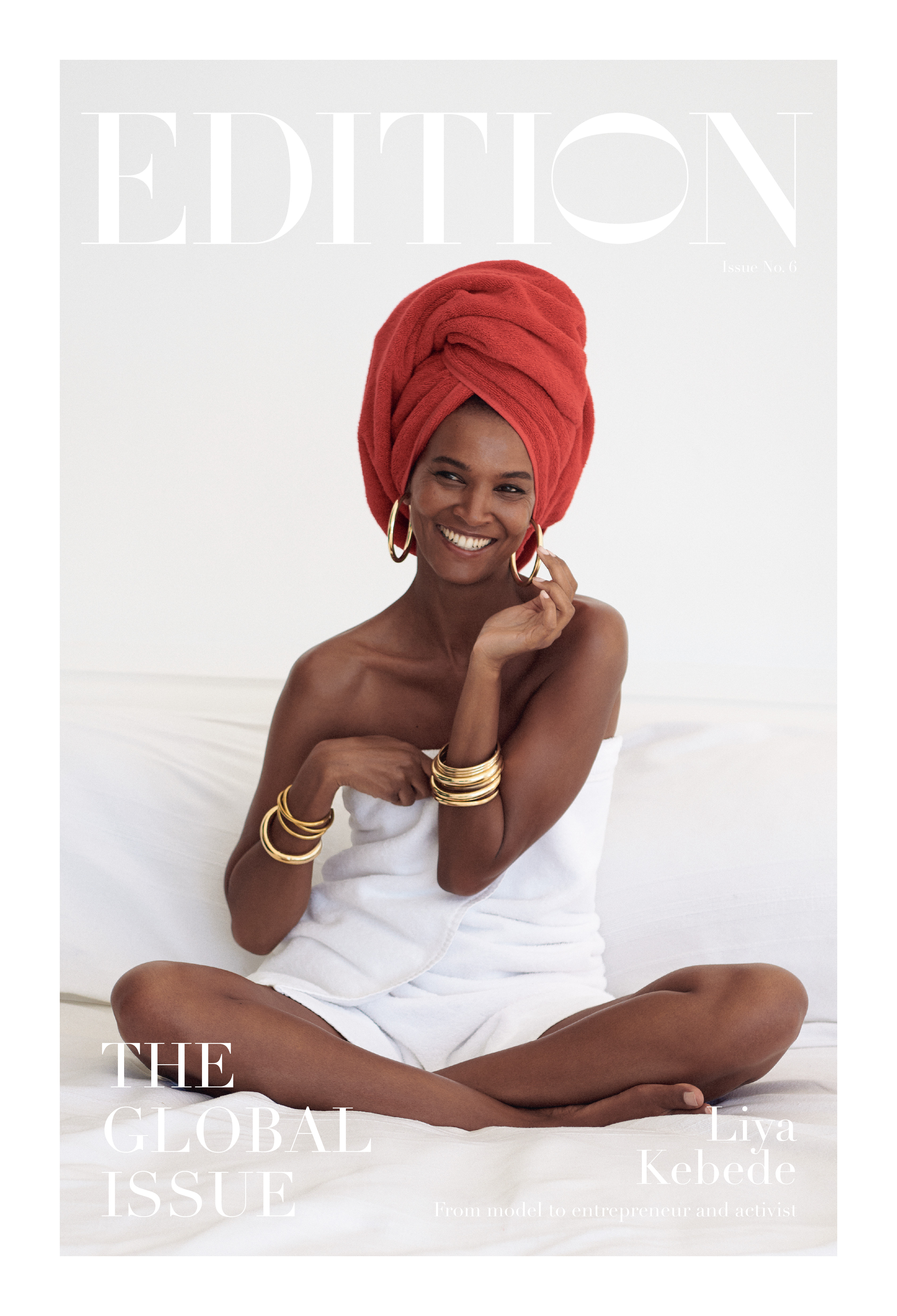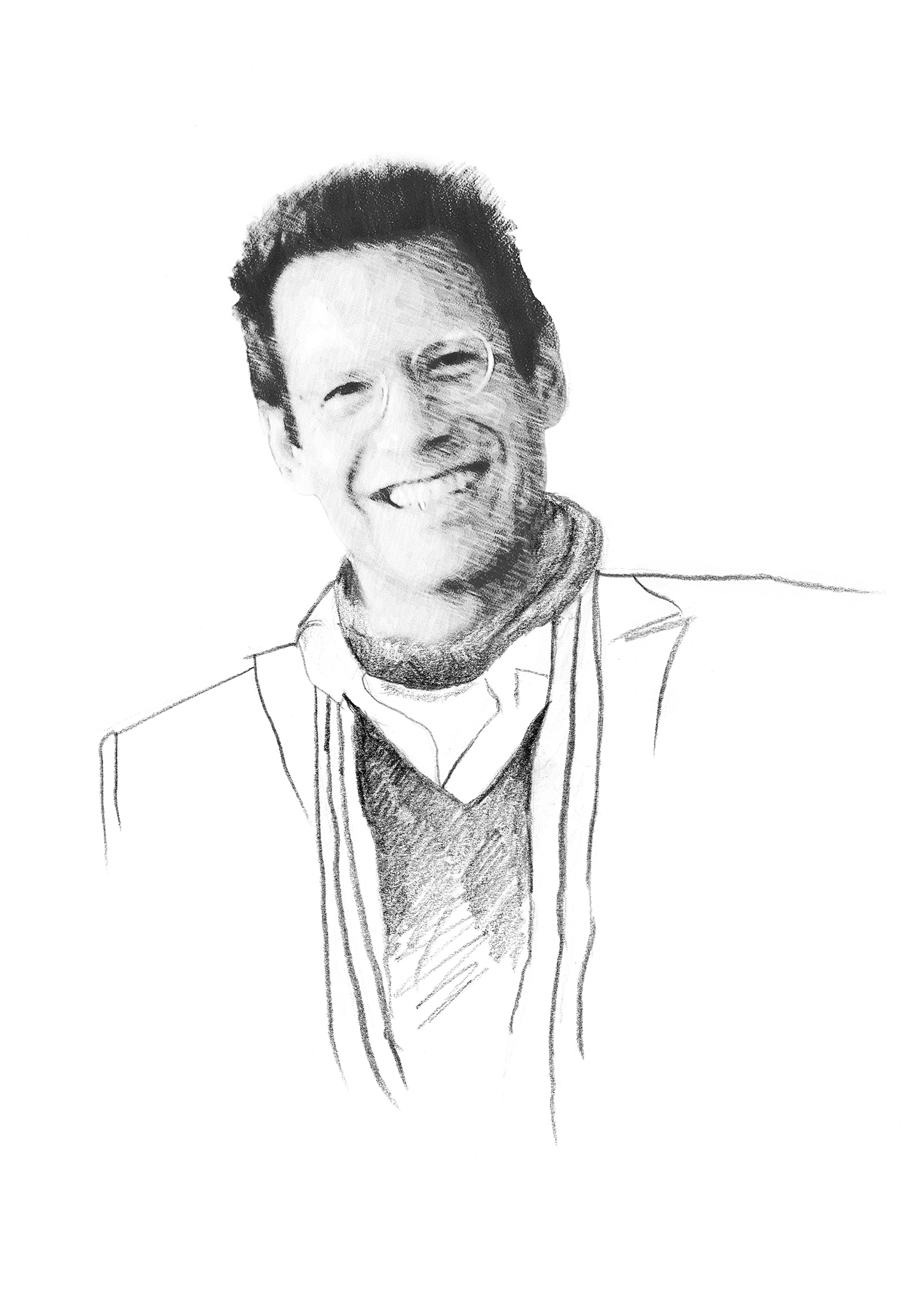
Global Issue
Global Issue: Editor’s Letter
Editor’s Letter
John Fraser
The Michelin-starred chef has a story to tell you through his cooking
Pundy’s Picks for Conscious Travel
Six tips for considered and conscious travel
Genmaicha Martini Recipe
The classic martini plus the health benefits of green tea
The Spread Love Project by Nicholas Konert
How Nicholas Konert’s rainbow heart design became an international icon
Wade Davis
Anthropology is the antidote to today’s nativism says the scholar and author
Carla Sozzani
The future of retail according to the founder of legendary concept store 10 Corso Como
The Art of Migration
The power of art to inspire empathy and social action
John Pawson
Zen Buddhism and minimalist purity drive the celebrated architect
Amy Duncan
As the CBD line Mowellens expands into skincare, its founder shares the personal story behind her company
Sila Sveta
Moscow’s favorite media studio finds the perfect balance between art and commerce
David de Rothschild
In his calls for environmental awareness, the modern explorer finds harmony between man and nature
Can Fashion Be Sustainable?
Shaping a better world through what you buy – or don’t
Brendon Babenzian
Supreme’s former creative director wants to end the cycle of consumption with his new brand Noah
Lily Kwong
Nature invades the urban jungle in the landscape designer’s expansive projects
House of Yes
Behind the scenes with the Bushwick nightlife collective promoting inclusivity and consent culture
Vivie-Ann Bakos
DJ Extraordinaire
Chez Dede
A medium in which two world-traveling, adventurous spirits absorb the globe’s vast curiosities and share them freely
Jesse Israel
A meditation guide for extraordinarily large groups
Liya Kebede
The Ethopian model, activist, and entrepreneur uses her label Lemlem as a force for change

-
 BYREDO BAL D’AFRIQUE
BYREDO BAL D’AFRIQUE -
 ALPHA INDUSTRIES M-65 LINER, BLACK
ALPHA INDUSTRIES M-65 LINER, BLACK -
 CLIF BAR SIERRA TRAIL MIX
CLIF BAR SIERRA TRAIL MIX -
 COMME DES GARÇONS WALLET
COMME DES GARÇONS WALLET -
 FUJIFILM X-T1 W/23MM LENS
FUJIFILM X-T1 W/23MM LENS -
 BLISTEX LIP MEDEX
BLISTEX LIP MEDEX -
 ADIDAS ULTRA BOOST
ADIDAS ULTRA BOOST -
 RAINS BAG, BLACK
RAINS BAG, BLACK -
 JUNO FACE OIL
JUNO FACE OIL -
 ARC'TERYX VEILANCE LIMINAL PANT, BLACK
ARC'TERYX VEILANCE LIMINAL PANT, BLACK

Art World Predictions
Veteran Art Dealer Kenny Schachter on Collecting Like There's No Tomorrow
By Kenny Schacter
We are in an unprecedented period of growth in the overall scale and global reach of the art market, more so in the past 25 years than in the previous 100. But nothing goes up forever without the requisite zigs and zags, and we are about to enter a period of monumental uncertainly where the good will mingle with the bad, oftentimes at the same dance. In other words, there will be dramatic highs and lows. Looking ahead, my ruminations on some of the most pressing questions shaping the contemporary art landscape.
Will 2016 break all records in terms of auction sales?
Without doubt we will see some unbelievable prices for post-war contemporary art, but I am afraid we have plateaued. We’re in the midst of a downward trend, yet one that still won’t exclude the notion of pornographic prices for covetous art, fresh to market. Yes, as obscene as it is, we will see a billion-dollar work of art—I’ve been forecasting it for years, but it will take some time.
Are art fairs over?
Like them or loathe them, art fairs are here to stay. Personally, I adore the ability to see so much, so swiftly, and under one circus tent. Yes, they are hell on your feet and wallet during the midst of one, but living in London the past decade where it could take weeks to wend your way to a mere handful of galleries, nothing beats the ease of navigating through so much material so readily.
What country will dominate in art-buying power?
The art market today is like a fast-moving river: When there is an impediment in the stream, i.e. one county suffers recessionary effects at the expense of another, there is always a region to pick up the slack. When a rock is thrown into a stream it merely diverts around the diversion. So if Europe hiccups, Asia can step in. But in my estimation, there is nothing that parallels the deep culture of collecting than runs historically throughout the US. The benchmark won’t change anytime soon: New York sales will never be eclipsed.
Who will we be buying more or less of?
In the short term, the most sought-after contemporary artists will continue to be the ones that just flouted the vaguely downward trends of the market and flourished in the spotty but solid November, 2015 New York sales: Rudolf Stingel, Mike Kelley, Christopher Wool, Joe Bradley, Jeff Elord, Bruce Nauman; and, on the more emerging end of the spectrum I like Math Bass, Petra Cortright, Amy Feldman, and Aaron Garber-Maikovska. Gerhard Richter said in relation to the obscene prices fetched for his works that only idiots would pay so much for a painting, but it’s better than the alternative—no one buying your art. When I got involved in curating emerging art exhibitions in the 1990s (featuring the likes of Wade Guyton, Joe Bradley, Cecily Brown, and Katherine Bernhardt), there was bad beer—for which I bear responsibility—and scary looking people on the scene to drink it all up. Now it’s all celebrities, but with that it brings more of a spotlight on the art profession so I won’t bemoan it (more than I have).
Will sales of new media art break any records?
I’ve bought three DVDs in my lifetime and between us, have misplaced them all. I am not a proponent of art that needs to be turned on, but I can see a Bruce Nauman vid going for big money. I am a prude when it comes to my personal aesthetic consumption favoring works on paper and paintings (and a sculpture here and there) with an aversion to frontal nudity, which is what the net was invented for.
Will there be more diversity in the art world?
Georg Baselitz said the reason women artists have never made the numbers at auction as their male counterparts is that no woman has made great art. What an a-hole. I don’t think I can ever look at his art again the same. And since he made such myopic utterances, Louise Bourgeois’ work has fetched nearly $30 million and Georgia O’Keeffe $44 million at auction. But the disparity of pricing in the art market still wreaks of racism and ingrained prejudices reflected in the wider world beyond art. Do we need more diversity, minorities, and women in museum and gallery shows? Ask the hard-charging, on-point Guerilla Girls and the answer would be an unequivocal yes.
How do we become the next great art collector of the future?
You may not like the answer: Art is a slow-burning, old-fashioned process of accumulating knowledge through reading, looking, learning, and connoisseurship. It takes time, consideration, and a deep abiding thoughtfulness. There are NO shortcuts; no advisors that should or could do it for you. Look and learn. The only tips I can proffer are take your time, walk before you run, and trust your gut, but only after a healthy dose of accumulated knowledge. The Supreme Court once described porn as such: I can’t spell it out but I know it when I see it, and the same goes for art. Do your homework, call me for some advice, and in the end, there are only your instincts to trust. The changes in art since I started and which I alluded to above are too monumental for words; the village has exploded onto a world stage for better and worse. Today, there are more people making, looking at, writing about, and buying art than ever before by a ginormous margin. We are at an unprecedented level of art appreciation, so let us rejoice. Throughout these epic changes, however, what has remained the same is the criteria for judging good art.
Who will have access?
At auctions we all have the same freedom of entry, as long as you can afford to pay, and at galleries, if you make yourself and your intentions clear, forthright, and transparent, you should have plenty of access. There is nothing wrong with an impulse buy as long as it is based on reasoned analysis. I guess that negates the notion of compulsion, but I still do it, yet it’s based on decades of looking and learning and I still happily approach art as a student.
How much should we listen to the critics?
You would probably not do too badly buying whatever Roberta Smith reviews positively. But this is not merely a matter of aping our peers, though I adore, admire, if not worship the wise words of Roberta every week in the New York Times; but if you do so you miss the point. Art is a personal journey where we mark our time through the shared experiences of the collective consciousness. So don’t miss the plethora of fairs, the Armory, Friezes, Basels, NADAs, Independents in all their resplendent glory: you are looking into a mirror of our rather glorious and unprecedented times, so why not roll up your sleeves, jump in, and participate yourself.
—Kenny Schacter
Art & Culture
The power of art to inspire empathy and social action
Zen Buddhism and minimalist purity drive the celebrated architect
Moscow’s favorite media studio finds the perfect balance between art and commerce
Behind the scenes with the Bushwick nightlife collective promoting inclusivity and consent culture
DJ Extraordinaire
A medium in which two world-traveling, adventurous spirits absorb the globe’s vast curiosities and share them freely
A meditation guide for extraordinarily large groups
Experiences
Moscow’s favorite media studio finds the perfect balance between art and commerce
In his calls for environmental awareness, the modern explorer finds harmony between man and nature
Behind the scenes with the Bushwick nightlife collective promoting inclusivity and consent culture
DJ Extraordinaire
Food & Drink
The Michelin-starred chef has a story to tell you through his cooking
Six tips for considered and conscious travel
Personalities
Style
The classic martini plus the health benefits of green tea
How Nicholas Konert’s rainbow heart design became an international icon
As the CBD line Mowellens expands into skincare, its founder shares the personal story behind her company
Nature invades the urban jungle in the landscape designer’s expansive projects
The Ethopian model, activist, and entrepreneur uses her label Lemlem as a force for change

